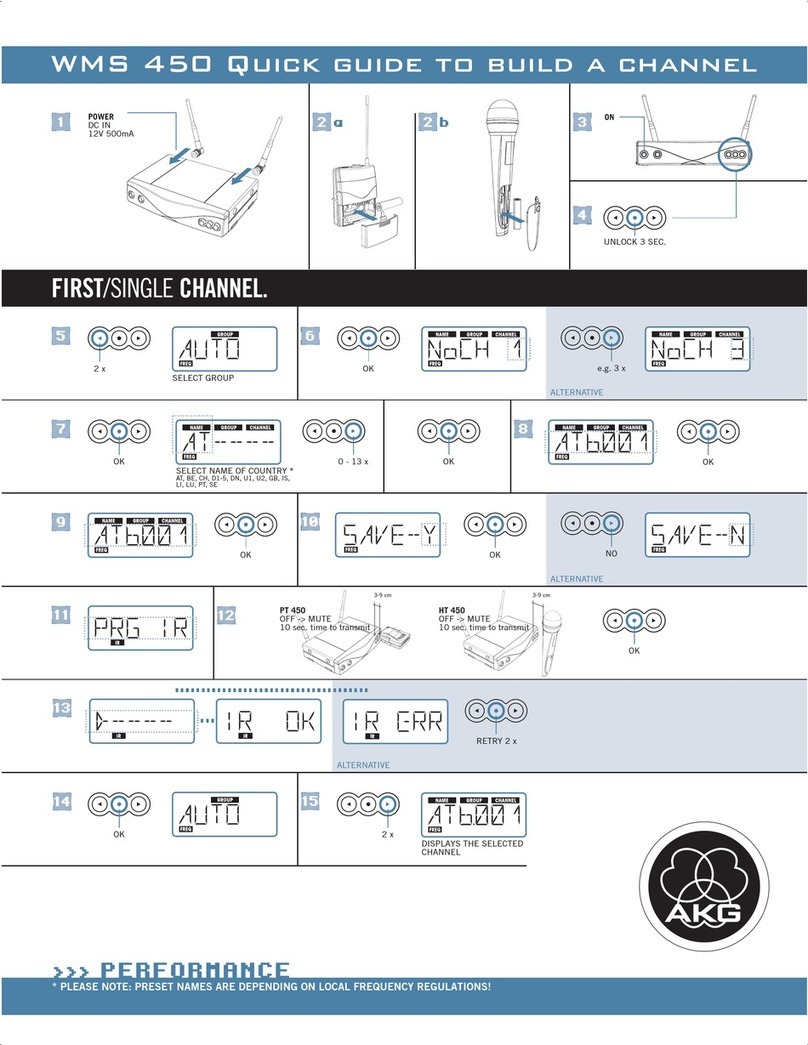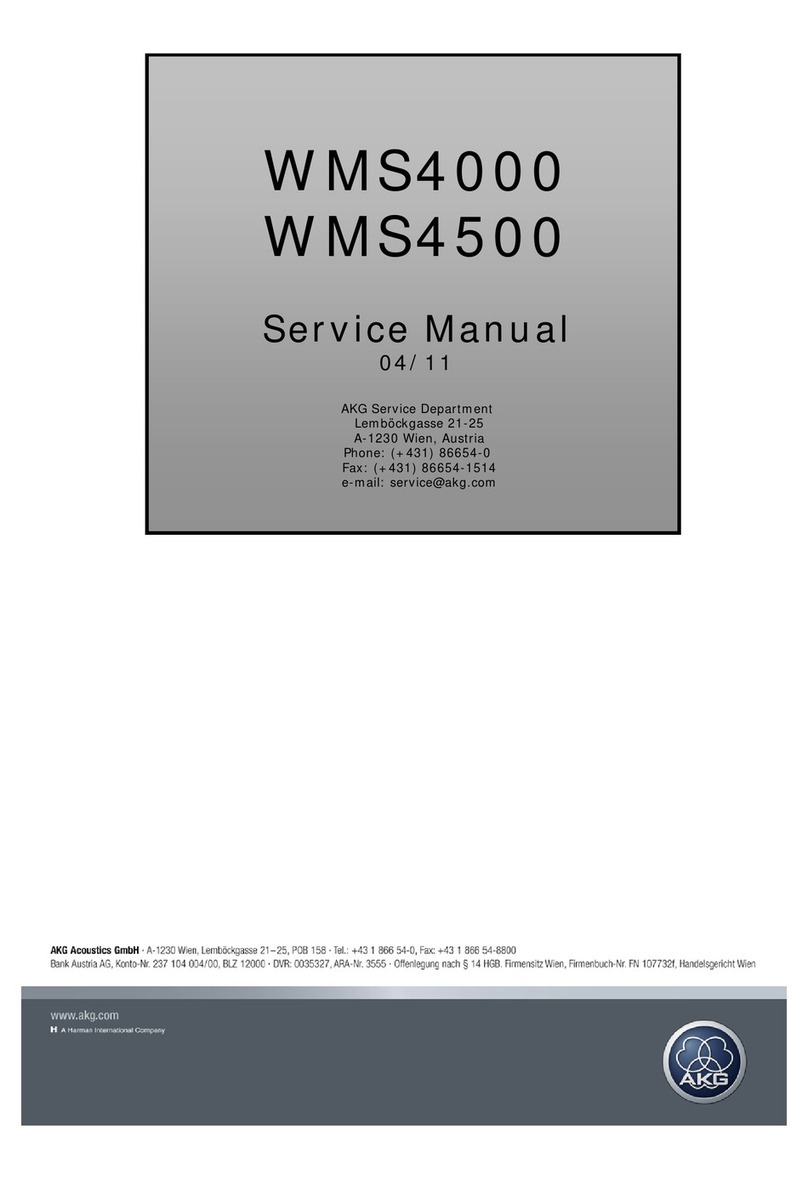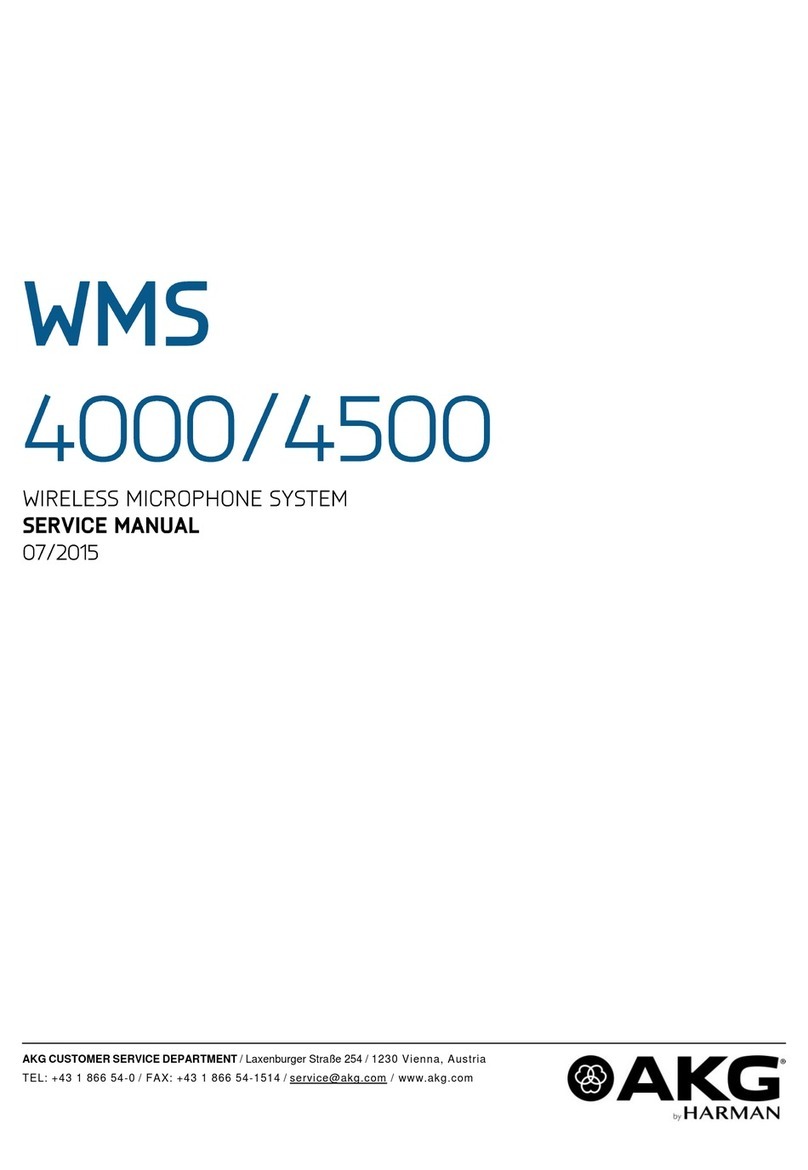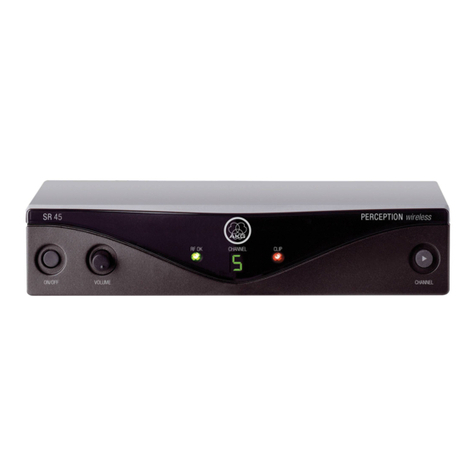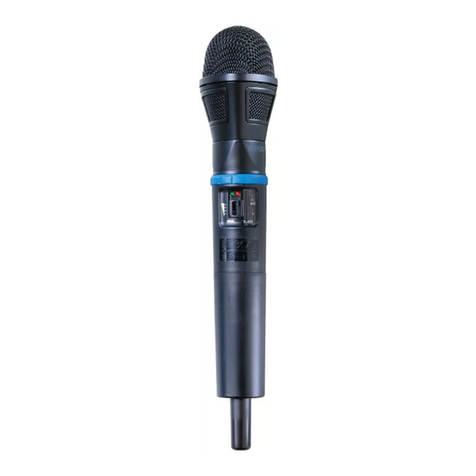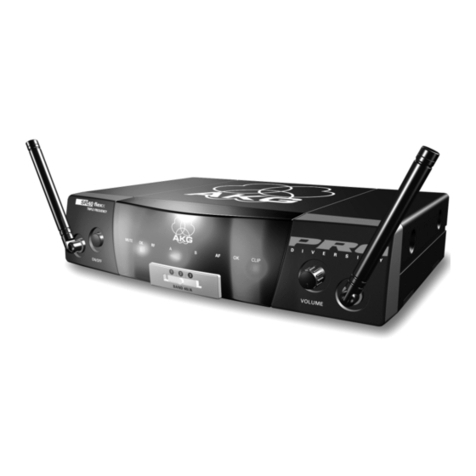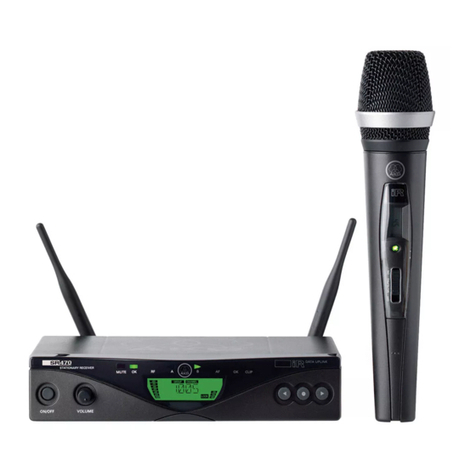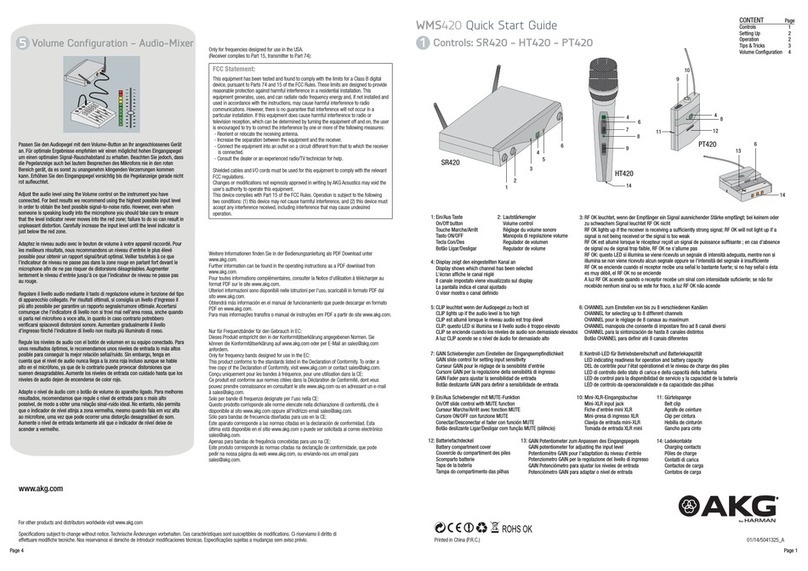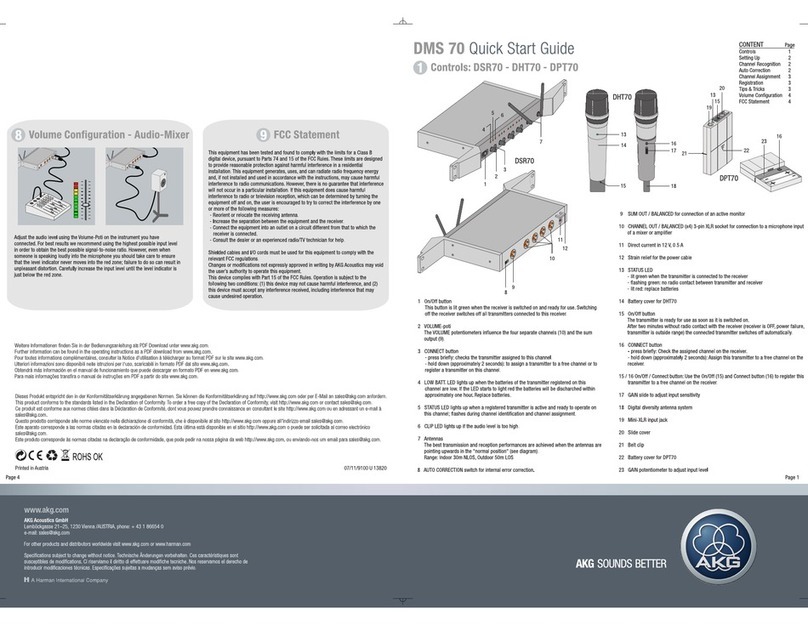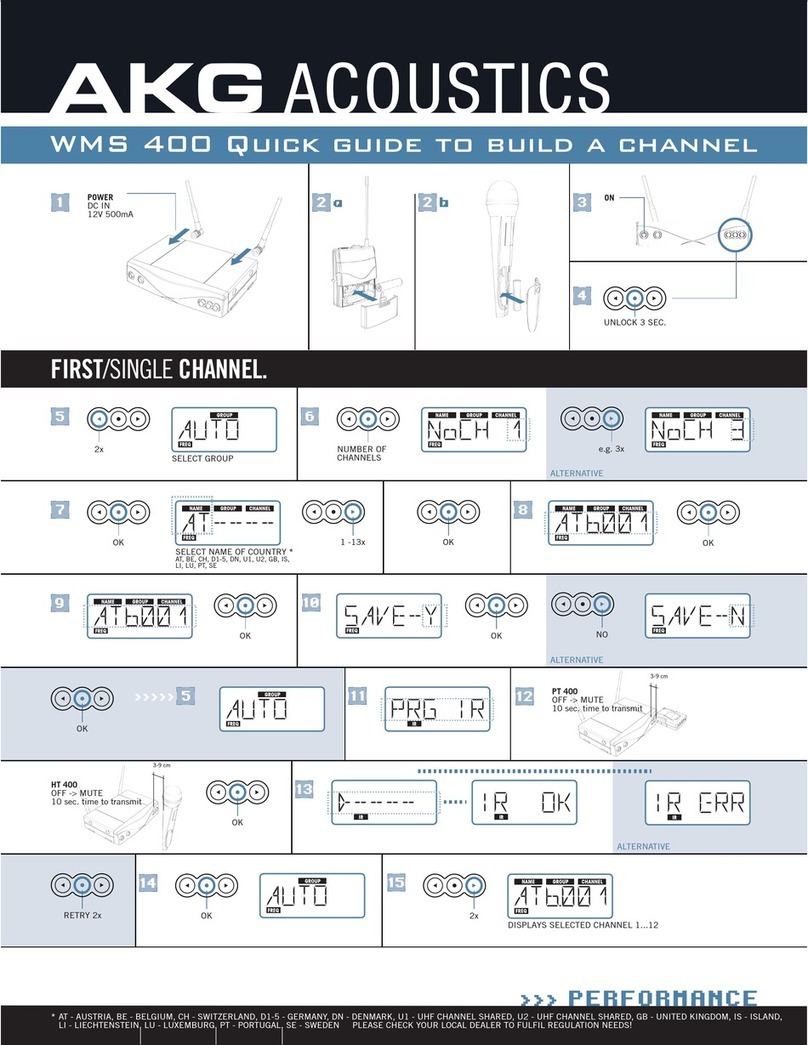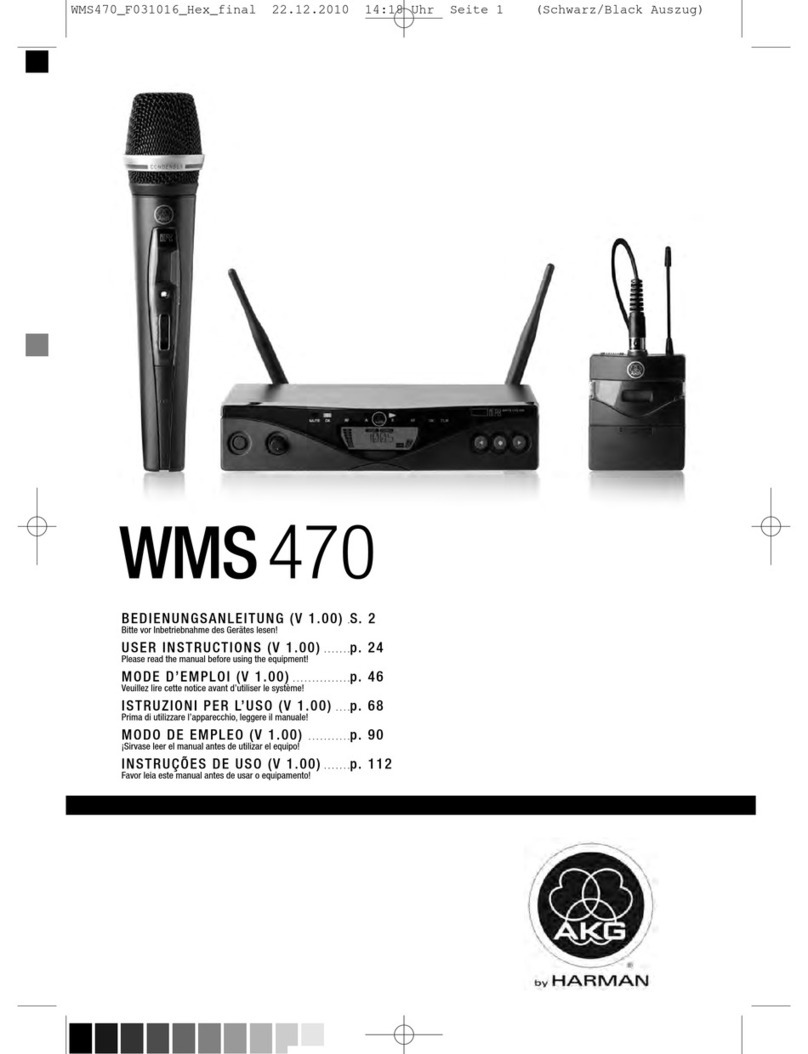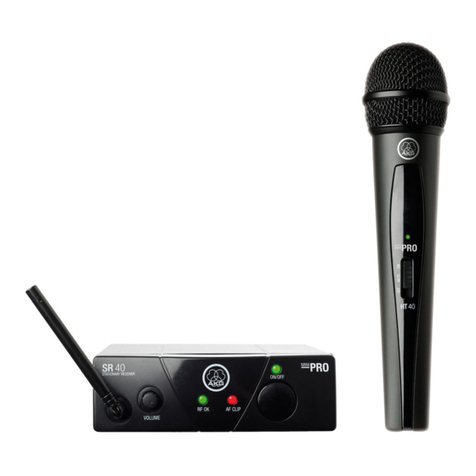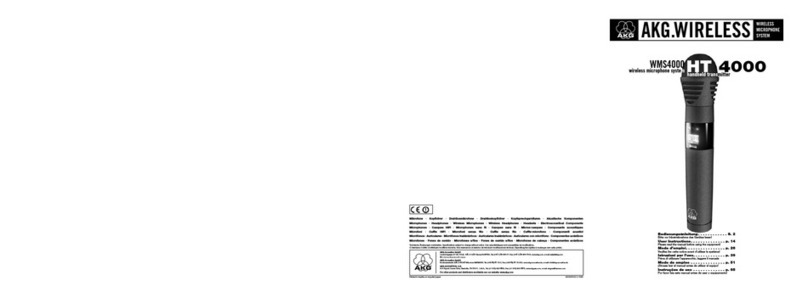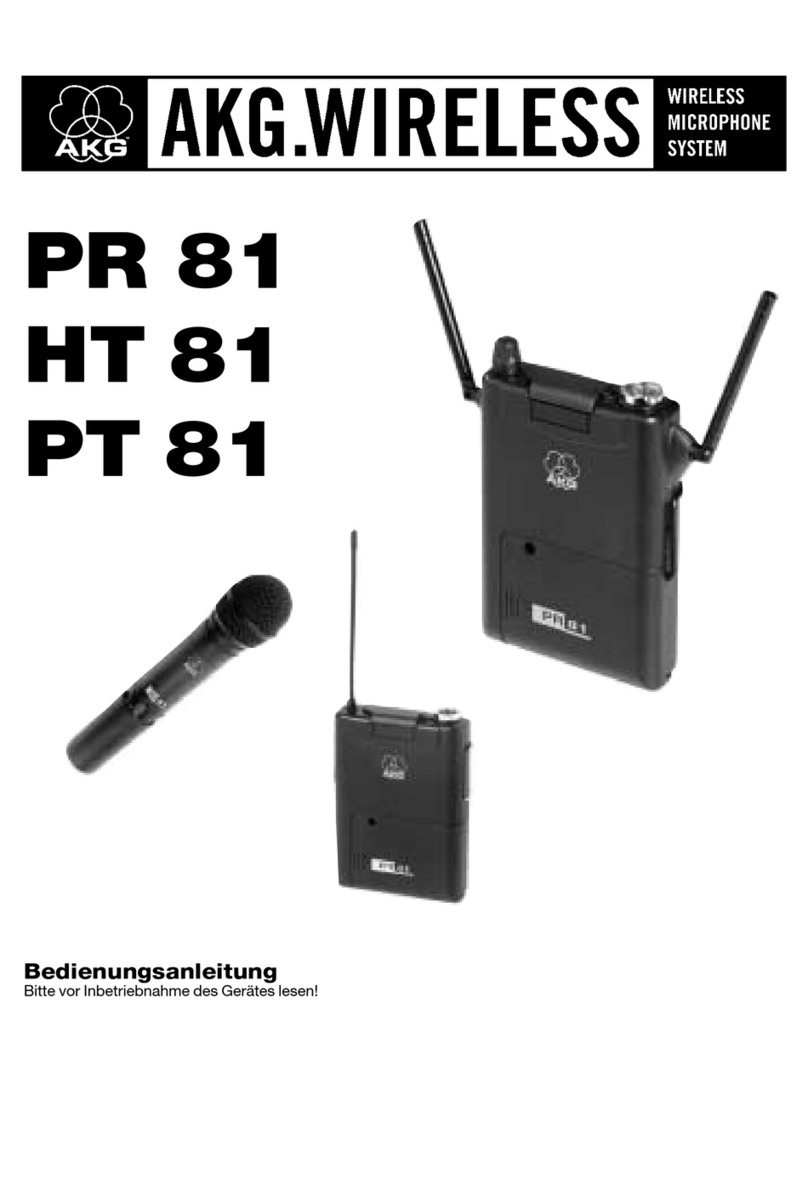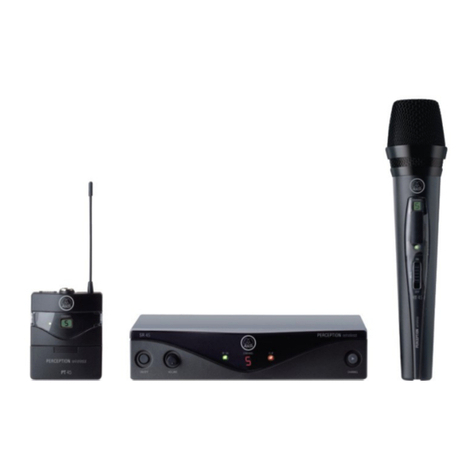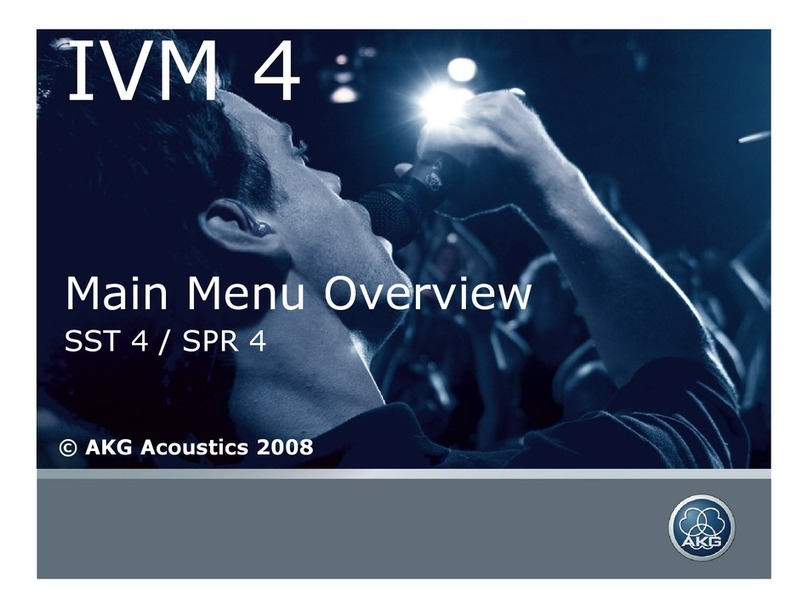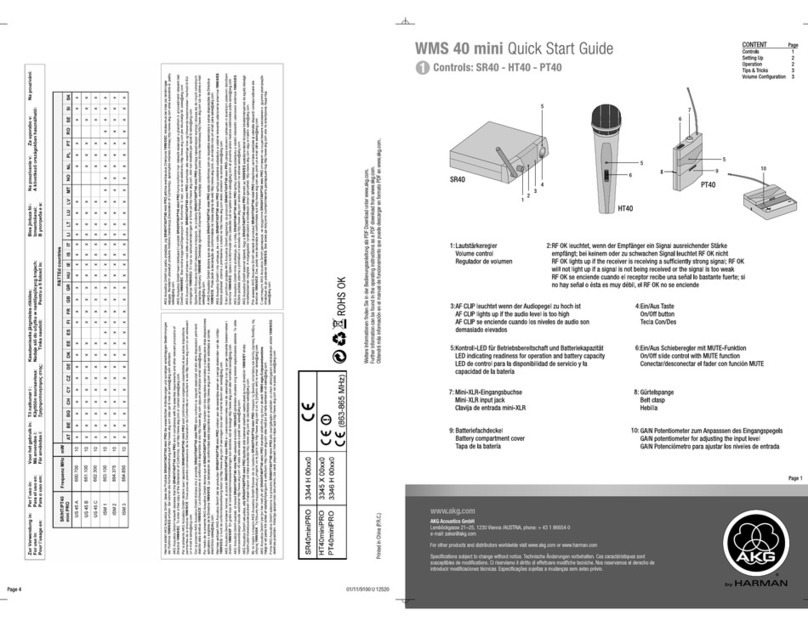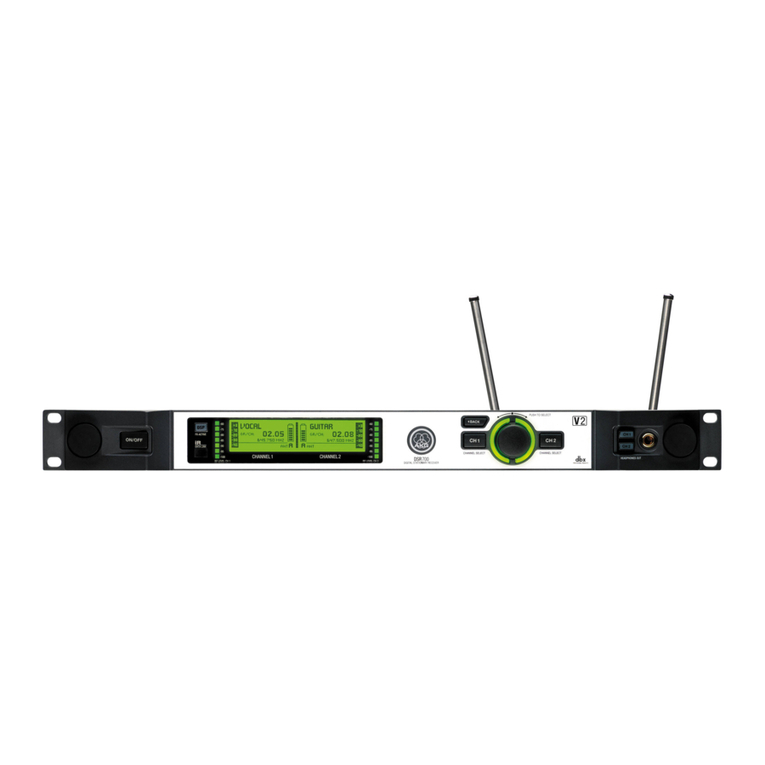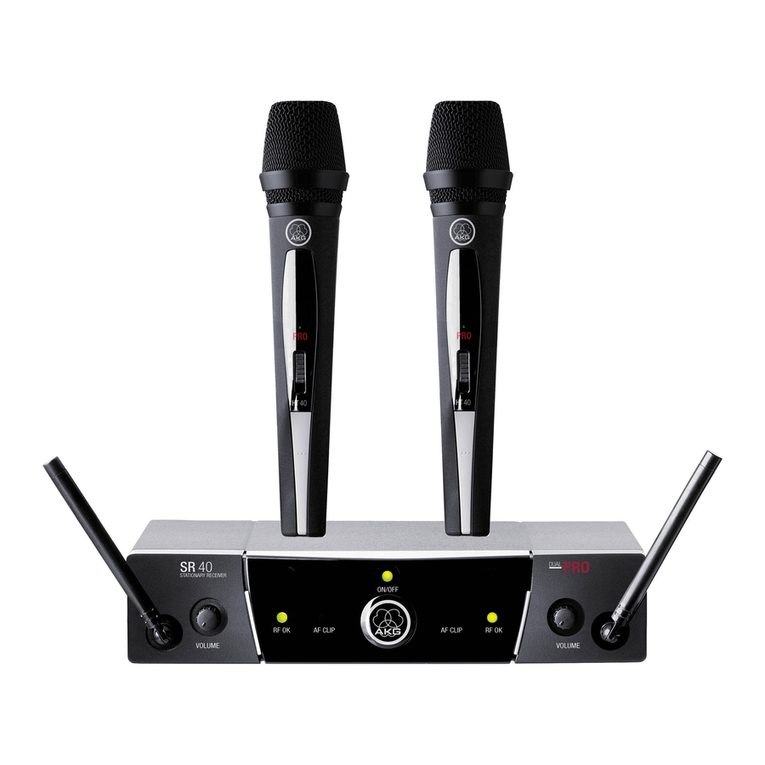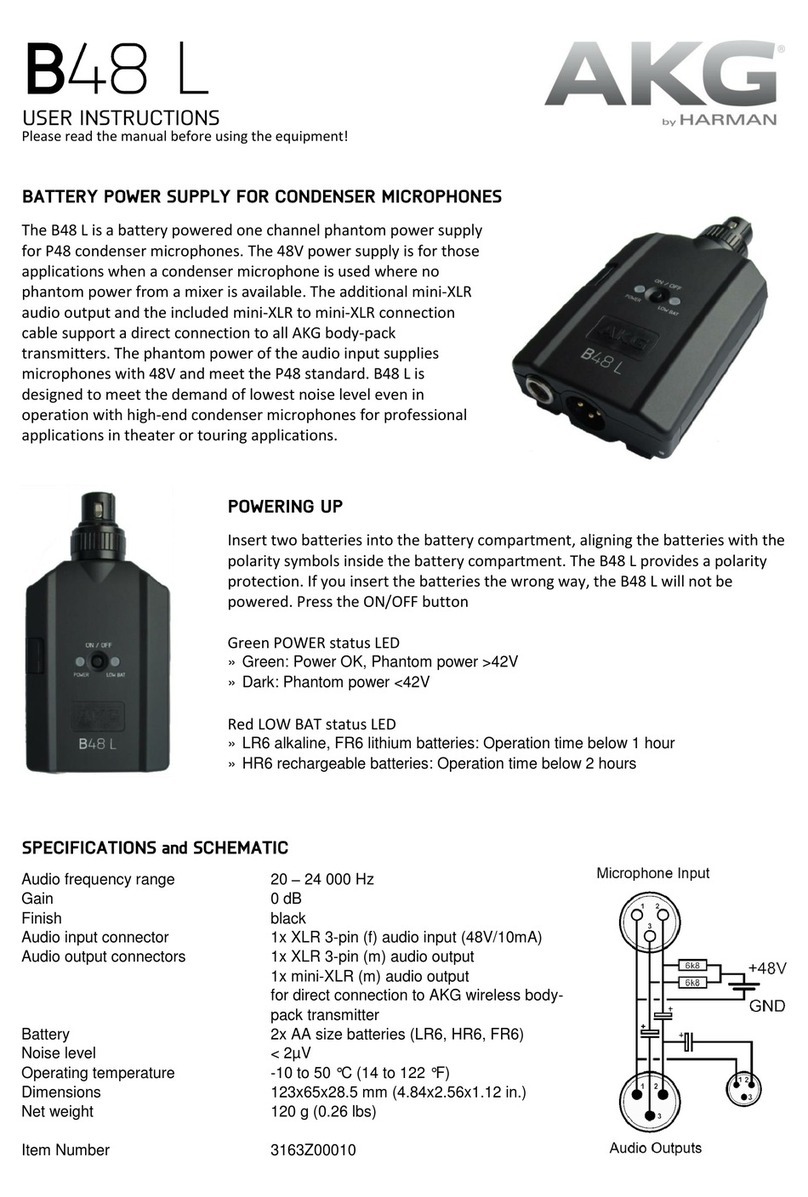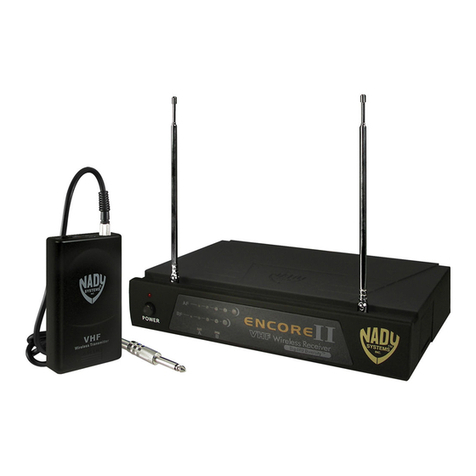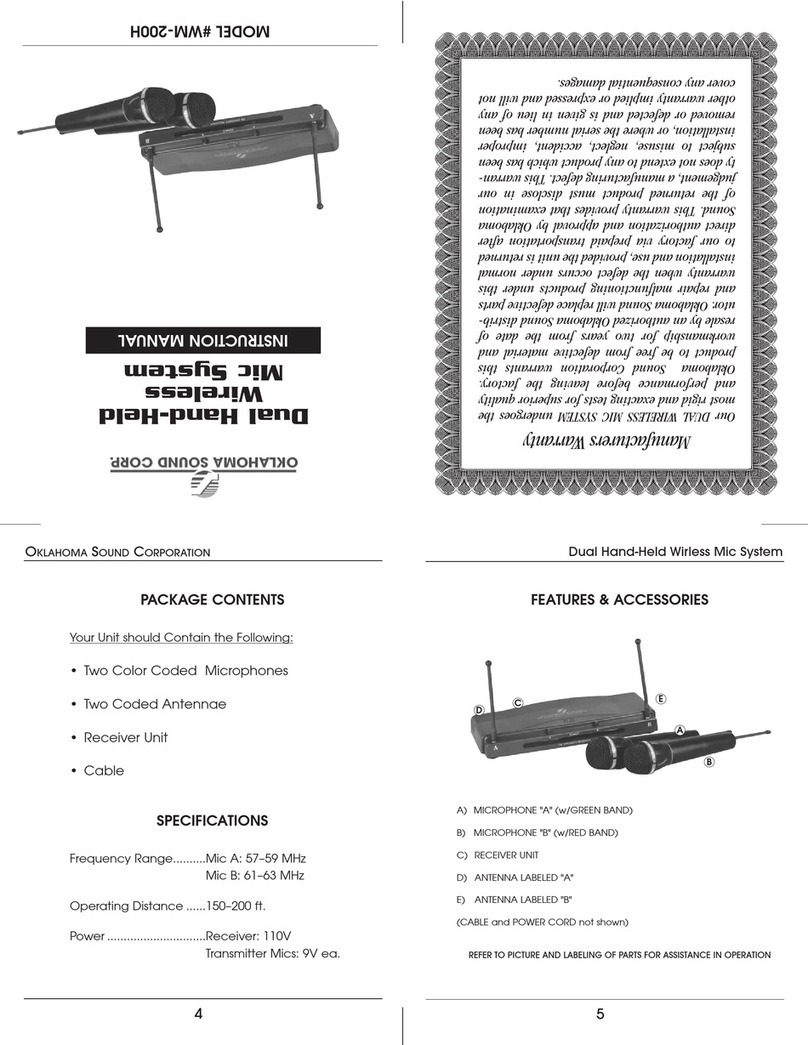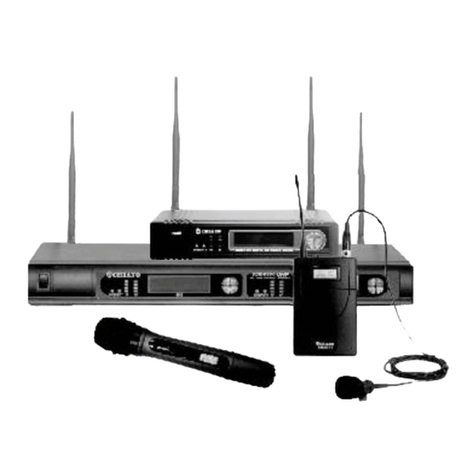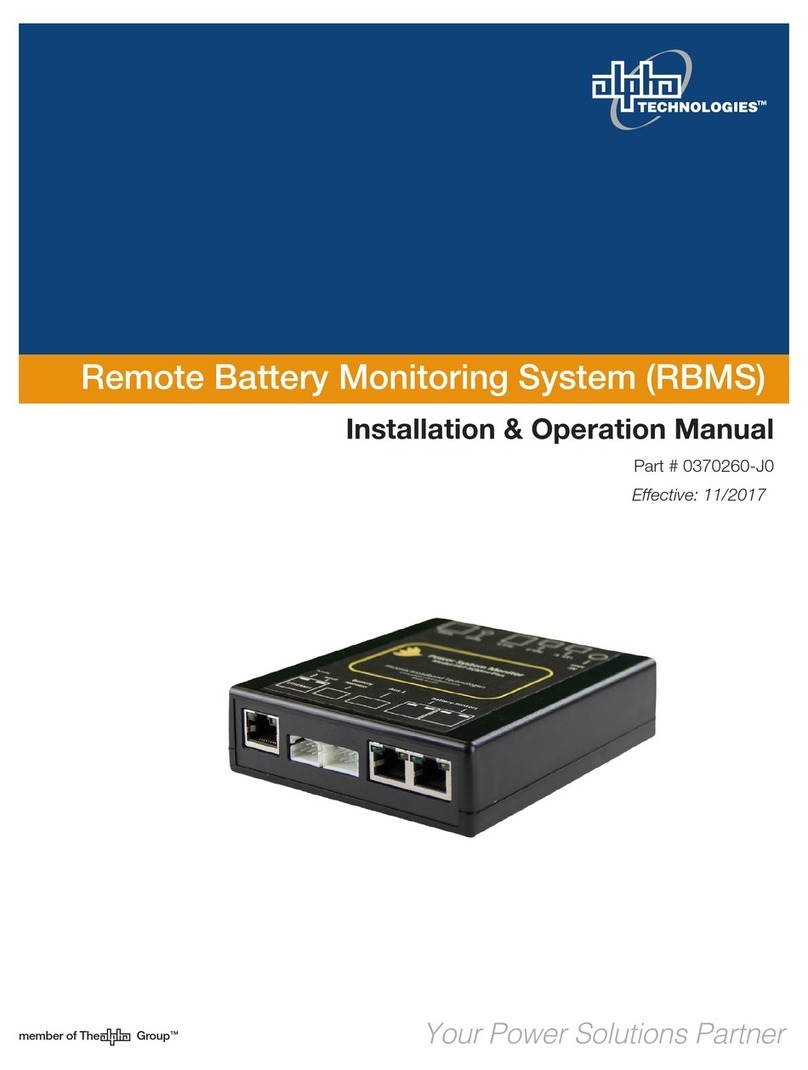- WICHTIGE INFORMATION -
Bitte beachten Sie, dass die Funktionsweise der Kontroll-LED der Sender GB 40, MP 40 und SO 40 wie
folgt geändert wurde:
Die zweifarbige Kontroll-LED zeigt den Ladezustand der Batterie bzw. des Akkus an.
•Wenn Sie den Sender einschalten und die Batterie/der Akku ausreichend geladen ist, leuchtet die Kontroll-
LED kurz rot auf und leuchtet konstant grün weiter.
•Solange die Kontroll-LED konstant grün leuchtet, ist die Batterie/der Akku in Ordnung.
•Wenn die Kontroll-LED konstant rot zu leuchten beginnt, ist die Batterie in ca. 60 Minuten, der Akku in ca.
30 Minuten erschöpft. Tauschen Sie die Batterie aus bzw. laden Sie den Akku auf.
Diese Änderung betrifft Kapitel 2.5 Bedienelemente und Kapitel 3.1 Batterie einlegen/austauschen und
testen.
- IMPORTANT INFORMATION -
Please note that the function of the status LEDs on the GB 40, MP 40, and SO 40 transmitters has been
changed.
The status bicolor LED indicates the current battery charge level.
•On switching power to the transmitter ON, the status LED will illuminate red for a moment and be lit green
constantly to indicate the battery is properly charged.
•As long as the status LED is lit green, the battery is OK.
•The status LED will be lit red constantly to indicate the battery will be dead in about 60 minutes if you are
using a dry battery, or in 30 minutes if you are using a rechargeable type. Replace or recharge the battery.
Never try to recharge dry batteries: they may explode!
This information replaces the corresponding passages in section 2.5 Controls and section
3.1 Inserting/Replacing and Testing the Battery.
- INFORMATION IMPORTANTE -
Le mode de fonctionnement des LED témoins des émetteurs GB 40, MP 40 et SO 40 a été modifié
comme suit :
La LED bicolore indique l’état de charge de la pile ou de l’accu.
•Lorsque vous mettez l’émetteur sous tension et que la charge de la pile/de l’accu est suffisante, la LED jette
une lueur rouge puis s’allume de façon constante sur vert.
•Tant que la LED reste sur vert la pile / l’accu est en bon état.
•Lorsque la LED s’allume de façon constante sur rouge, vous n’avez plus qu’une autonomie de 60 minutes
pour la pile, 30 minutes pour l’accu. Vous devez alors remplacer la pile ou recharger l’accu.
Cette modification concerne le point 2.5 Eléments de commande et le point 3.1 Mise en place / rem-
placement et essai de la pile.
GB 40guitar bug MP40micropen SO 40snapon
WMS40
microtools
BITTE LESEN! - READ ME! - A LIRE ATTENTIVEMENT ! -
ATTENZIONE! - ¡SE RUEGA LEER! - LEIA POR FAVOR!
GB 40guitar bug MP40micropen SO 40snapon
WMS40
microtools
GB 40guitar bug MP40micropen SO 40snapon
WMS40
microtools
